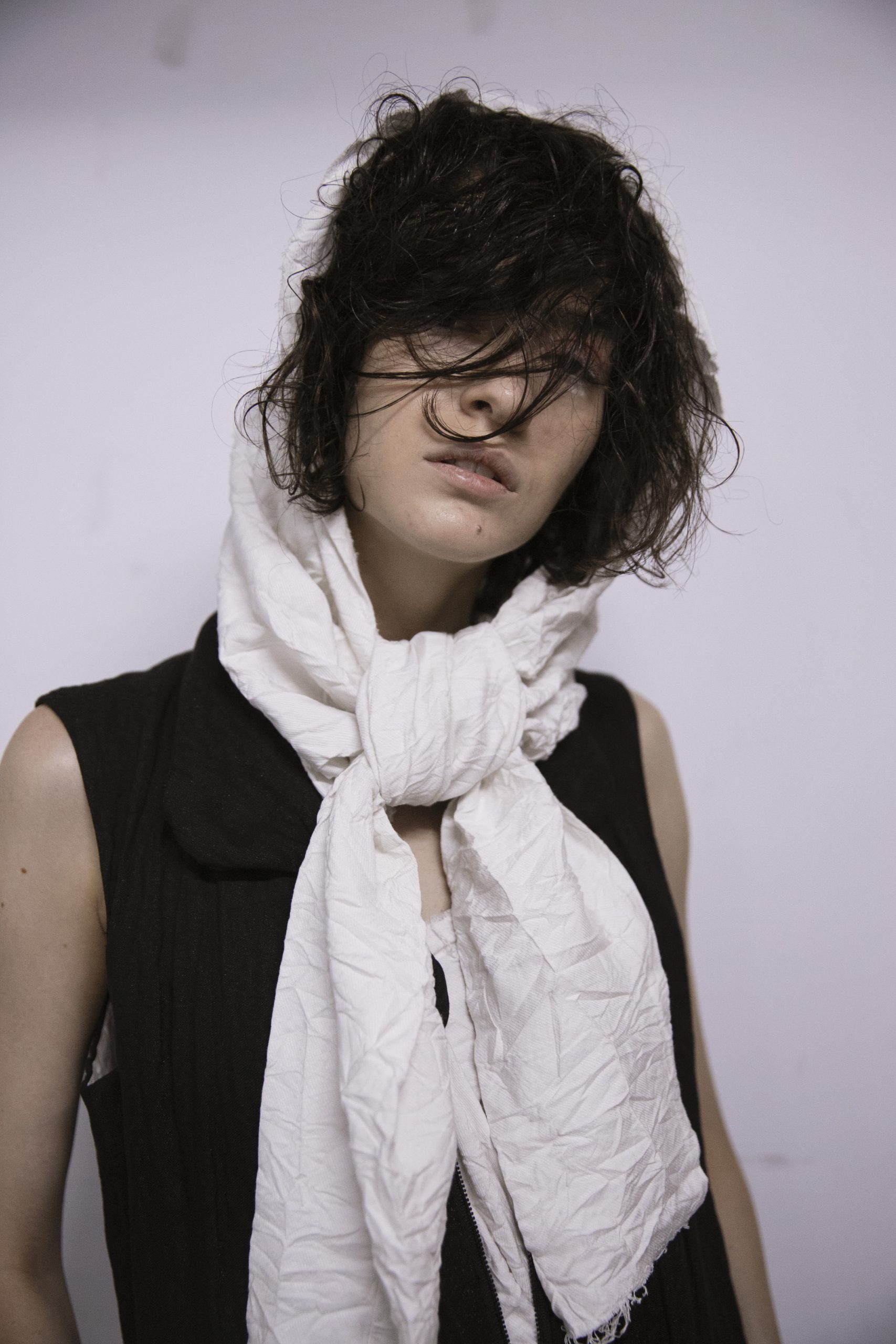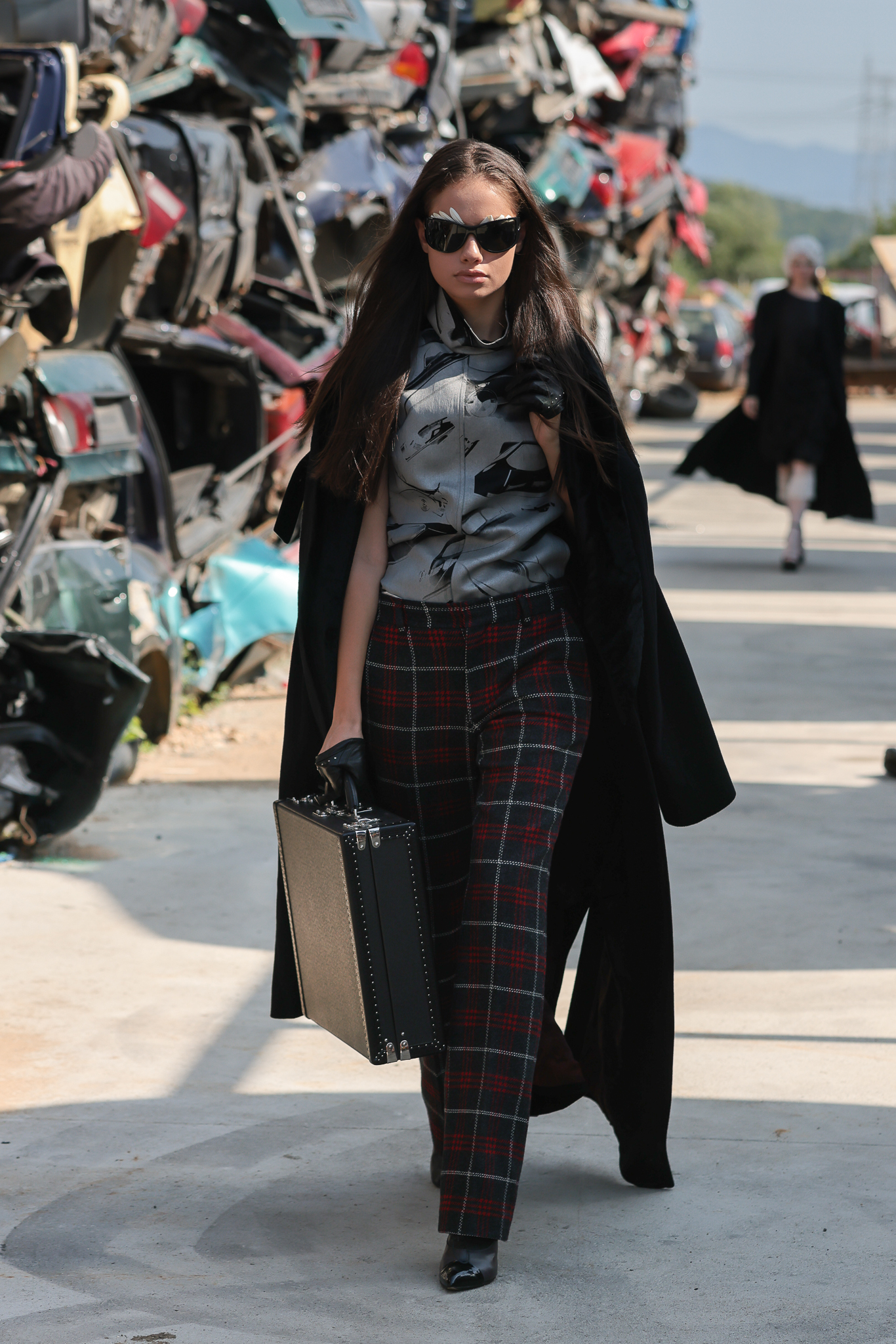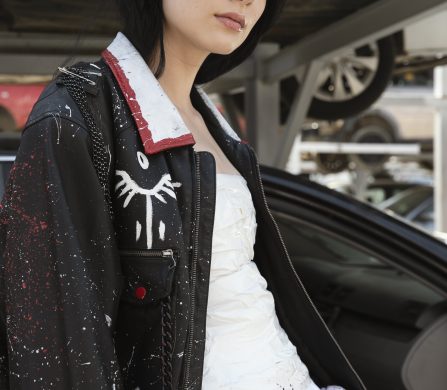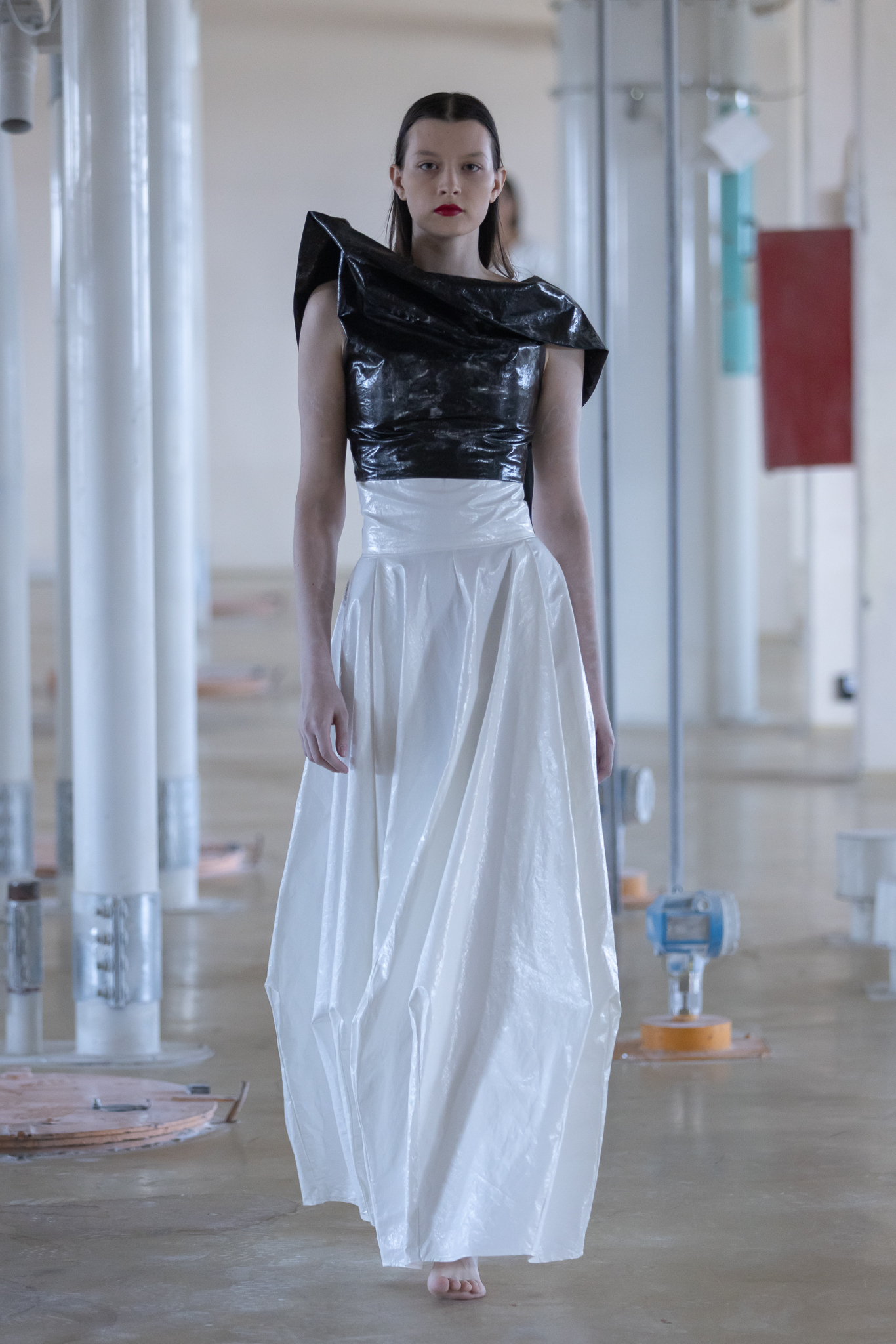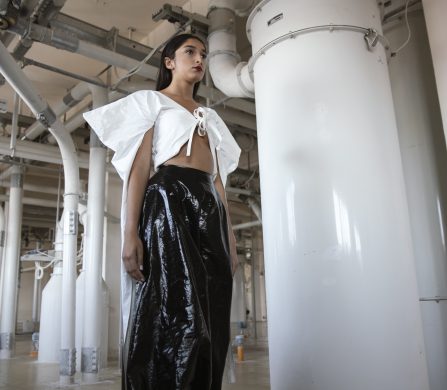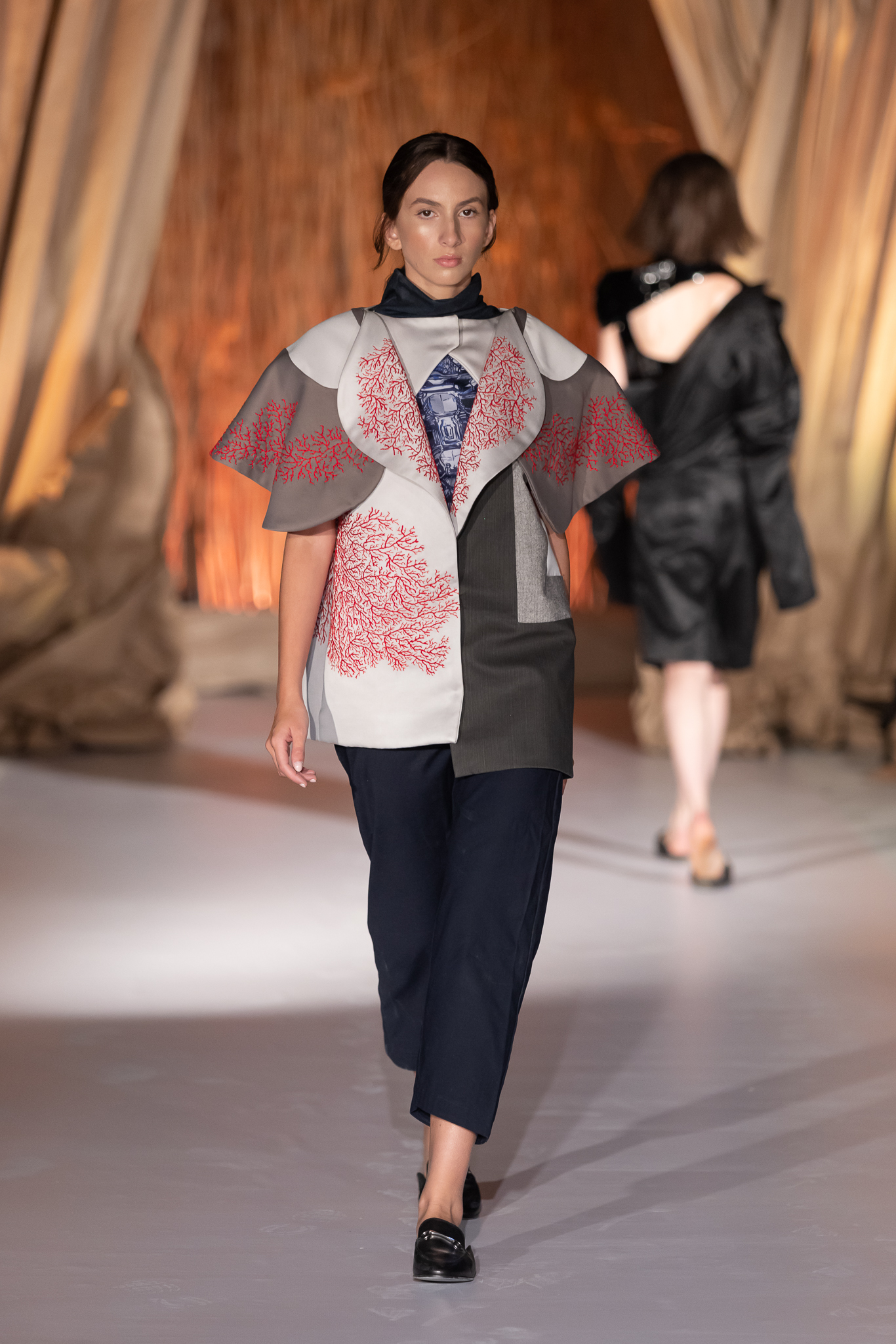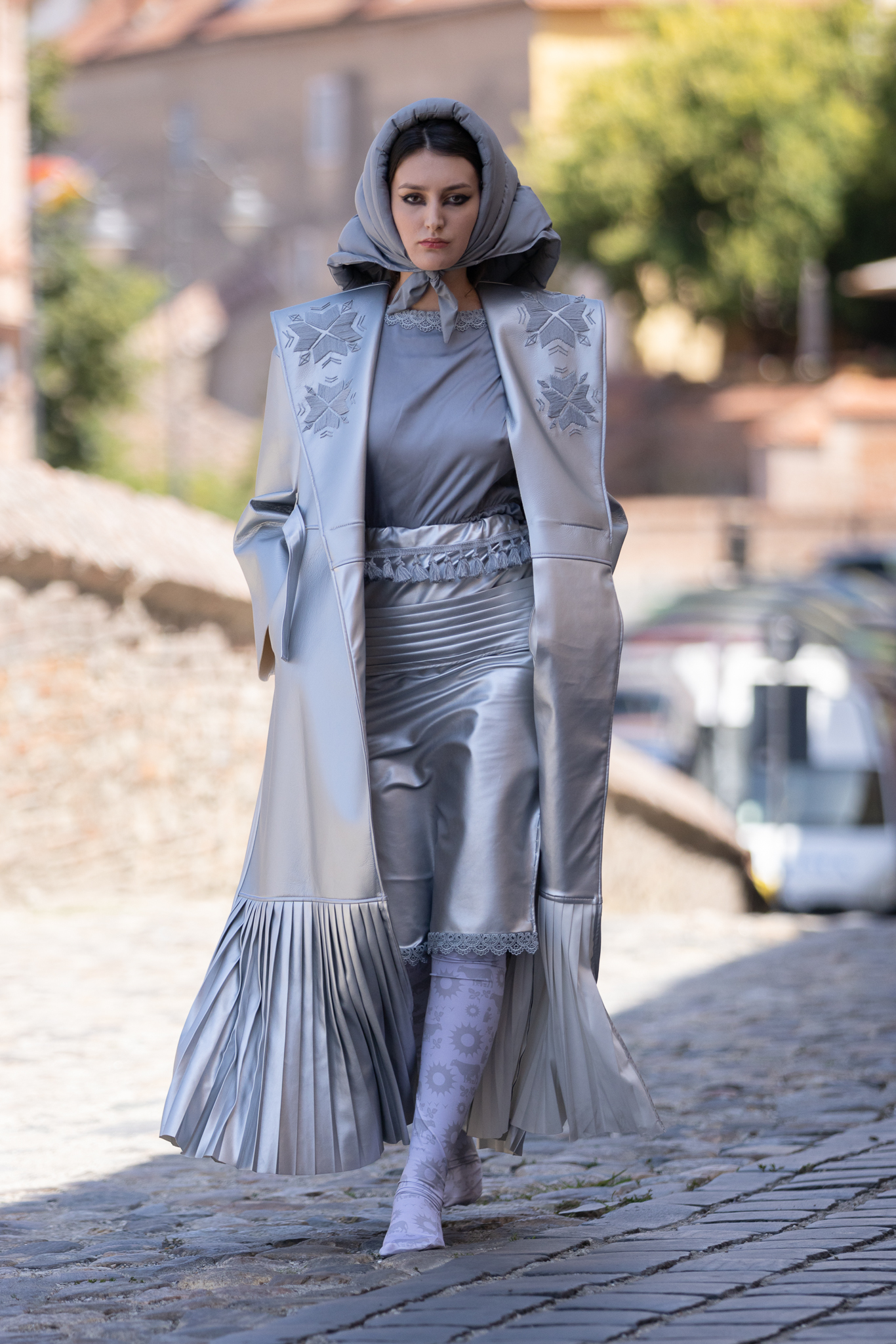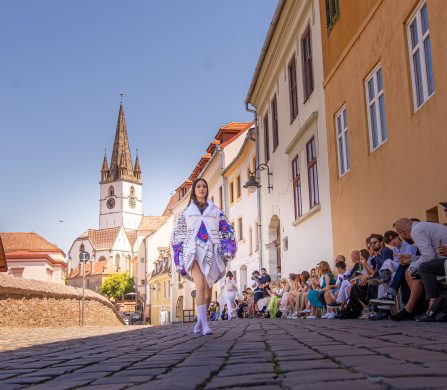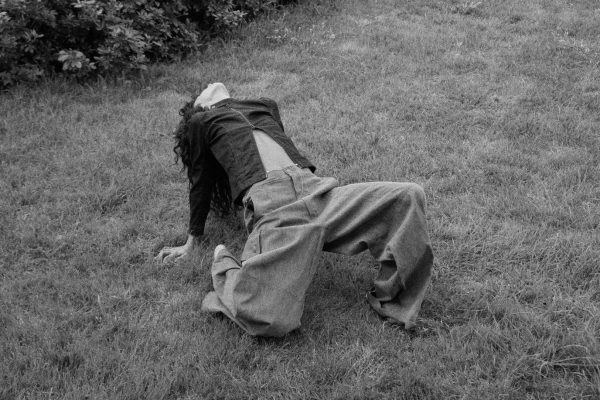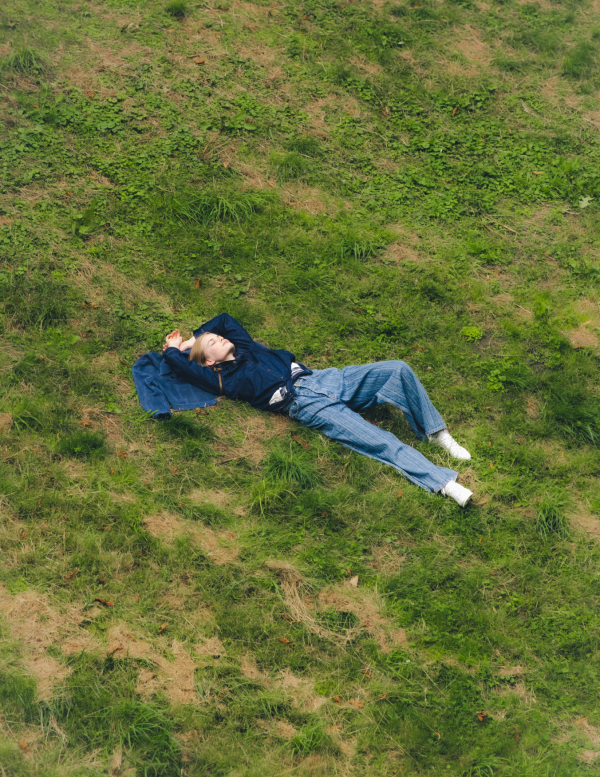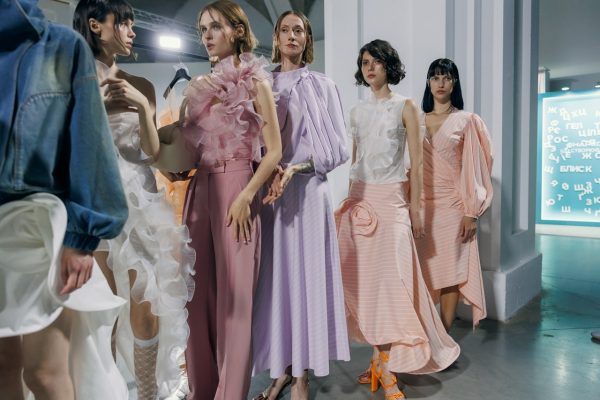In the middle of July, in the heart of Transylvania, magical things can happen. But beware — they may restore your faith in fashion. It comes as no surprise that the industry had lots to endure during the current times and hard circumstances everyone has been facing, but you know what they say… after rain comes sunshine. This time, sunshine has been brought and continues to shine by the echoes Feeric Fashion Week has left behind.
The 14th edition stands as proof that being called the most creative fashion week in the world was not simply words and the unique, atypical spaces where the shows were held are here to stand by those words. Schön! explores Feeric Fashion Week and uncovers the unconventional.
As a way to support Ukrainian creatives, aware of the struggles of current times and aware of Ukrainian designer’s situation and the war, Feeric offered Irina Dzhus, founder of the brand holding the last name, exposure to a wider market. This was done by not only presenting her collection during the festival but being the first show of the event. On another benevolent note, Feeric states that the support for Ukrainian designers will expand and the first steps had already been made with the fashion departments of some of the most prestigious universities in the country, which will be included in a new project that aims to inform and prepare the young creatives as part of the hub they are building and tirelessly working on.
DZHUS Autumn/Winter 2022 collection refers to illusion as the fundamental notion of the metamodernism culture. Duality and hidden senses are undivided from DZHUS design itself, offering numerous metamorphoses of clothing and accessories, and clothing into accessories. The visual aesthetics of the looks is ironic and controversial within themselves. In the Autumn/Winter line of unified wardrobe items, the designer’s fantasy went further than functional additions; duplicity is materialized literally, and the extra content is physically unveiled, as the pieces are transformed either when delaminated, or once their inside is extracted.
Borbala collection features many recycled and upcycled materials, such as melted plastic bags, recycled HDPE, reworked sportswear, and knitwear. Low-tech waterproof garments are one of the key items of the collection, referring to the dramatic consequences of climate change, that unfortunately many communities are already experiencing, and the DIY finishings and childish drawings are an open invitation for anyone to be part of the change.
Born out of concern for the planet and a love for fashion, Dressingz.com is the newest home of luxury pre-loved garments. In the form of a marketplace, this is the destination where you can shop and sell authentic goods, verified by international experts: from rare vintage items, IT contemporary pieces, and exclusive garments coming directly from famous brands to a wide selection of goods uploaded by fashion enthusiasts.
Hooldra is responsible upcycling brand known for its marvellous collaborations with emerging creatives for a new ethical standard in fashion. For the new collection, with considerably less impact on the environment, HOOLDRA once again involved Mira Wanderlust and Jacqueline Barth. Everything in the collection is ‘real’ — starting from the deadstock upcycled garments, leftover fabrics and hand-made shoes with recycled adhesive bands, to the choice of the location to reflect our environment and the choice of the models. The artistic moment will be joined by a media campaign initiated by Feeric Fashion Week and Humane Society International in Romania, which aims to stop the use of furs and natural leather in fashion creations.
“Out of the box” is a collection of the emotions that grow inside us when ignored until they burst outside of us and control who we are. It is a collection of evening dresses so extravagant, they become characters made of noisy taffeta so that not even those with eyes on their phones would not miss their entrance. Loss of function, the last dress in the show, was inspired by the multicoloured spinning wheel that tells us that the computer is blocked.
In the following, prepare to be amazed by the talent of young designers as Feeric has opened its gates to some of the most prestigious universities from the countries around. Feeric has showcased the work of more than 50 designers during the fashion week. The words of Mitichi, president of Feeric Fashion Week, offers us a glimpse of the future, which looks bright for the young creatives:
“We are at the 14th edition of Feeric Fashion Week, the journey so far is incredible. We have managed to bring Sibiu to a place of great honour on the European fashion scene, to become the most important fashion week in Eastern Europe and one of the most creative in the world, but things are really starting now, with this edition of transition that prepares a new path. Thus, we will add continuity to the project by approaching an educational segment and by involving the local community.
We continue to offer designers the most suitable launching pad through the connections created over these 14 years around the world and we will try to turn Feeric Fashion Week into a huge global fashion hub. And we are proud to create everything in Sibiu. If you thought this is all, get ready to discover, and even encourage the new wave of talented young designers from this part of the world that will showcase next edition in Sibiu through Feeric Fashion Week’s partnership with the best design universities from East Europe, Balkans, Central Asia and Middle East. There is hope for a new mentality in these regions fashion markets and we will be part of the change. It’s a promise.”
In this group collection of Bachelor graduates of the Fashion Design Department, the clothing from the University of Art and Design in Cluj-Napoca is a synthesis of novice designers who have developed in the framework of their license project. The group collection of the students reinterprets in a personal way the most contemporary fashion themes, such as the issue of gender and ethnic identities, and ideas of ecological, and ethnographic legacies. We also find classic themes, such as the relationship between fashion with time, or the relationship between fashion and cinema.
UNAGE Iasi
The “Far East” collection is made by Alexandru Fediuc, a master student at the “George Enescu” National University of Arts in Iasi. The collection consists of six clothing ensembles and is inspired by the culture and traditions of the countries of the Far East.
The group collection represents an eclectic selection of creations extracted from the graduation projects of students from the Faculty of Arts and Design, West University of Timisoara. The collections address various topics of interest in fashion and contemporary society: from the revaluation of Romanian ethnic elements to the aesthetics of tattooing, the theme of bullying, body dysphoria or 40s military uniform.
RAM is an autobiography collection that refers to the images of the author’s memory, furthermore to the designer’s connection with nature from the birthplace area. The transposition of the pieces and accessories from the collection focuses on the slow-fashion approach that includes fabrics made traditionally using looms, modifying the structure of fabrics, hand-made crocheted surfaces with natural organic threads and wooden sculpted accessories. Ramona Bizbac wants to deliver a personal authentic story, a viable alternative experience to fast fashion.
Cracow School of Art and Fashion
Nargiz Salwa’s collection entitled “Moments” is inspired by the moments of life that people perceive. Moments of childhood, of youth, of maturity, of changes and turns. It shows all stages of life and its colours – from carefree childhood, youthful rebellions, and the world of adults, to the passing. The collection is made of dead stock materials and fabrics.
Today it is increasingly difficult to define the boundaries of fashion where Haute Couture borders on sportswear and gender codes are demolished. IED offers a selection of clothes to tell the gaze of young talents in the contemporary world. Words such as sustainability, oversize, craftsmanship, tradition, and contrast (black/white) are hidden among the folds, shapes and fabrics of the collection. Furthermore, IED wanted to support and promote a Romanian designer who has just graduated from the Milan campus. Starting from the traditional dress, Marinela Djurdj finds in the embroidery and innovative materials a new expressive language capable of recounting the independence and redemption of women.
For more information, visit Feeric Fashion Week.
photography. Fran Gomez de Villaboa, Ancira Adeon, Cornel Petrus, Calin Covaci, Max Shuz, Dragos Burcea + Adrian Murgea
words. Landiana








